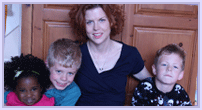Giveaway: Quiet: The Power of Introverts in a World That Can’t Stop Talking
In honor of today’s release of the paperback edition of Quiet, I am pleased to be able to offer a copy of the paperback edition to one of my readers with a United States mailing address. Just fill out the form below before the giveaway closes on February 4, 2013 at 11:59 pm CST.
This is my original review of the hardcover edition of Quiet. The giveaway entry form is at the end of this post.
 Quiet: The Power of Introverts in a World That Can’t Stop Talking by Susan Cain
Quiet: The Power of Introverts in a World That Can’t Stop Talking by Susan Cain
Publisher: Crown
Release Date: January 24, 2012
My rating: 4 of 5 stars
In Quiet: The Power of Introverts in a World That Can’t Stop Talking, Susan Cain explores the differences between introverts and extroverts and how the Extrovert Ideal has taken over in America. As an introvert myself, I found a great deal of validation in reading this book. For example, in the first part Cain writes about introverts in the workplace and how teamwork and open office floor plans instead of cubicles usually lead to less productivity and creativity. As someone who always hated group projects in school and the corporate world, that was just what I wanted to hear. Luckily, I left the corporate world a couple of years before open office floor plans came into vogue.
Part two of the book dealt with the biology of being either an introvert or extrovert. Cain makes generalizations about how introverts and extroverts behave and I couldn’t help focusing on the ways in which I don’t conform to her stereotypical introvert. No one does completely I’m sure but generalizations had to be made for the sake of conciseness. It was interesting to learn about how the brain actually responds to various situations differently in introverts versus extroverts.
In part three of the book, Cain discusses Asian Americans which are a theoretically introverted people. While I have no doubt that Cain did a lot of research for the whole book, including this part, I’m uncomfortable when generalizations are made about an entire race or ethnic group. Since I’m not Asian American and I haven’t done any of my own research, I can’t say how accurate Cain’s assumptions about them actually are.
Part four is about how to function in society as an introvert, including how to fake being an extrovert when necessary. Cain also offers advice on how an extroverted parent should deal with an introverted child. I would have also appreciated tips on how an introverted parent should parent an extroverted child. One, possibly two, of my children are extroverts and my husband is also an introvert like me so we could definitely use some help with that.
Overall, I really liked this book and I think other introverts will too. Extroverts should read this book as well to better understand their introverted friends and colleagues. This is a book for everyone.




